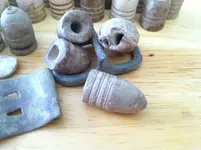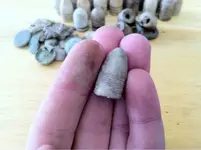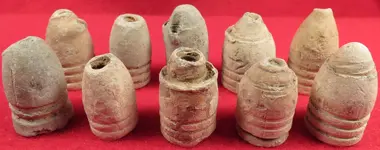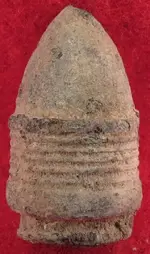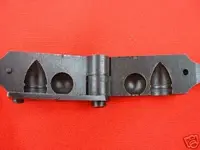Because you asked me to comment -- note that the misfire "pulled" bullets in the photo have some grooves made by the bullet-puller/worm on their nose-top, which is the only place on the bullet that gets touched by the bulletworm. So, "bullet-pulling" cannot be the cause of the "extra" grooves lower down on the body of DirtyMike's bullet.
The single bullet in the other photo is known as a Multi-ring Sharps, and it came out of the bulletmold with that number of rings/grooves on it.
DirtyMike's bullet was also cast with more than the typical number of grooves. Some diggers used to call that kind a "re-cut mold" bulllet. But in actuality, when you cut additional grooves into a mold, it creates ridges on the bullets you cast in that mold (not additional grooves on the bullet). There is no way to re-cut a bulletmold to make ridges on the bullet.
We now believe the mold was simply mis-manufactured. But since it would still cast acceptable bullets, it got used despite the irregular grooving on the bullets it would produce. Because the great majority of such bullets have been dug in Confederate troop-locations, they are believed to have come from CS-made bullletmolds.
Take a look at the bulletmold in the photo below. The raised ridge in its cavity is what forms the groove on the bullet it casts. If you were to cut an additional groove in the mold's cavity, it will make a raised area on the cast bullet -- not an indented area. You cannot "re-cut" the mold to add additional ridges in the mold's cavity, to make additional grooves in the bullet. So, despite what the McKee-&-Mason bullet book says, DirtyMike's bullet is not from a "re-cut" mold.



